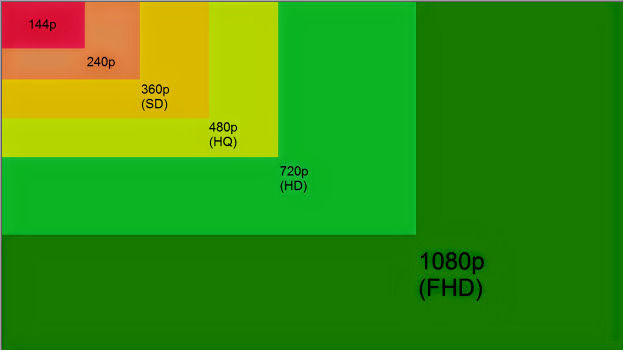My Thoughts on the Different Video Quality Modes and Resolutions On Youtube and Other Sites
- SevenHeavenHaven

- Nov 24, 2020
- 2 min read
Updated: Nov 28, 2020
This was a blog that I originally made back on September 2, 2013 at 9:15 AM.
I've just been lately looking up info and other things on these different video quality and resolutions. I remember when I was a kid seeing my very first Betamax and VHS videos.


The quality in those movies and shows weren't even close to what we have today. Nowadays, we have 720p, 1080p, and even the new 4K Ultra High Definition. To understand all the different resolutions, we need to look at the lowest quality that's been recently introduce by youtube back a couple of months ago or longer which is the 144p. This resolution has only 144 pixels across so the quality is going to be horrible and appears to have been recorded with a potato as some youtubers would call it. lol Well back to the topic. I believe as blurry and bad the 144p quality is could help those with slow internet. This is good for ultra-low bandwidth and for slow internet connections. As we go higher within the SD (Standard Definition) ranges like 240p, 360p, and 480p the video quality becomes more clearer and you can make out what you are watching and have a clearer understanding of what it is.
Standard Resolution Aspect Ratio
240p 320×240 4:3 320 is the amount of pixels vertically while 240 is the amount of pixels horizontally.
240p 427x240 16:9
360p 480×360 4:3
360p 640×360 16:9



We now take a look at the 720p (1280x720) range and 1080p (1920x1080) range of resolutions and quality of videos. These are high definition and are called HD for a reason. They are very crisp and clear in quality compared to their predecessors and are used in gaming monitors, movies, and flat screen HD TVs nowadays. For the latest quality, we look at the 4K which is again just another term for Ultra High Definition.
Format Resolution Display aspect ratio Pixels
4K Ultra high definition television 3840 × 2160 1.78:1 (16:9) 8,294,400
Digital Cinema Initiatives 4k (native resolution) 4096 × 2160 1.90:1 (256:135) 8,847,360
DCI 4K (CinemaScope cropped) 4096 × 1714 2.39:1 7,020,544
DCI 4K (flat cropped) 3996 × 2160 1.85:1 8,631,360
Academy 4K (storage format) 3656 × 2664 1.37:1 9,739,584
Full aperture 4K (storage format) 4096 × 3112 1.32:1 12,746,752
As you can see the amount of pixels are gigantic compared to the previous HD thus 4K is called Ultra HD! Here's a video to show you how big 4K TVs are! 4K TV
So in conclusion the higher the number the higher pixels and thus the better the quality and resolutions!





































Comments